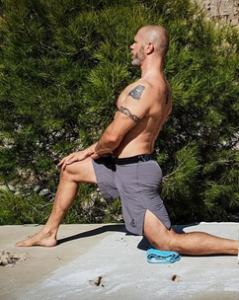 The winter is melting away to spring and this means that more people are looking to become active again and begin working out more. Unfortunately, this can create pain for many who choose the wrong exercises creating pain and movement dysfunction.. As a chiropractor, I often find myself telling patients what exercises not to do more than exercises they should do to decrease their pain. Below are the three exercises that most frequently cause the most problems and have the greatest potential to cause you pain.
The winter is melting away to spring and this means that more people are looking to become active again and begin working out more. Unfortunately, this can create pain for many who choose the wrong exercises creating pain and movement dysfunction.. As a chiropractor, I often find myself telling patients what exercises not to do more than exercises they should do to decrease their pain. Below are the three exercises that most frequently cause the most problems and have the greatest potential to cause you pain.
Sit-Ups: The exercise everyone should avoid
The easiest way to break a metal wire is to bend the metal at one spot back and forth until it fatigues. Eventually, the metal will become so weak that it breaks. In engineering terms, this is referred to as repeated stress/strain reversals. This example applies directly to our spine. Our spinal discs are not ball in socket joints where repetitive movement helps to improve the joint. They are more like a jelly doughnut and similar to the wire in the above example, repetitive bending will cause the disc to bulge. Repeatedly bending the spine in an exercise like a sit-up will fatigue the weakest link of a spinal disc and cause a spinal injury. This leads us to the question: “How do we build core strength without doing sit-ups?”
The Pot Stirrer: The sit-up alternative
An exercise that can develop tremendous core strength and avoid potentially damaging spinal flexion is called “The Pot Stirrer.” You can find a great description in this video along with some other great core strengthening exercises. https://youtu.be/gcuou0OPNMA
Stretching the Back or Hamstrings: It is just not worth it
Stretching is a controversial area. Many people find the short-term benefits of stretching helpful but overlook the long-term consequences. Stretching the neck, shoulders, back, and hamstrings may feel good, but as the stretch receptors are stimulated, the neural tissues are stretched causing more stiffness the next day. Worse yet, are those who may have stiffness due to disc bulges. Stretching can make the bulges larger (see the analogy from above). This makes static stretching, for these patients, counter productive. For those who like to stretch before exercise know that static stretching deadens the muscle from a neural perspective. This diminishes the stretch reflex and reduces peak strength and power. This makes stretching of the low back and hamstrings just not worth the potential damage the stretching can cause.
 The Lunge Stretch: The fix for low back pain
The Lunge Stretch: The fix for low back pain
Immobility of the hip joint has a proven correlation with back issues. Hip tightness can form a tight or compromised hip joint capsule, tight muscles, or neural tension that causes hip and/or low back pain. On the other hand, “active flexibility” facilitates muscle contraction and wakes up the neural system. The lunge stretch can be a great exercise to mobilize a tight hip joint and lengthen the muscles surrounding it. Tight muscles should be tuned and enhanced for performance to create better balance around a joint. The lunge stretch is key to doing this for the hip joint and the low back. Here is an instructional video on how to do that, https://youtu.be/2f9wUB1vGeE
Shoulder Shrugs: A shoulder pain and headache maker
Relaxed shoulder muscles are necessary for athletes engaged in running, throwing a ball, swinging a club or racquet, and even riding a horse. People with headaches, neck pain, and shoulder pain frequently complain of tight shoulders as well. One exercise all individuals should avoid is the shoulder shrug. This exercise is commonly performed in the gym, but it is also performed during daily life. Sitting at the computer, texting on the phone, propped up on the couch, even carrying a purse will create a shoulder shrug exercise. This harmful exercise creates undue stress on the spine and weakens the stabilizers of the neck and shoulders. Your chiropractic adjustment is one of the most effective treatments for this problem. Below, we will explore alternative exercises to improve shoulder posture and strength.
Foam Rolling and Push-ups: The fix for the slump
These two activities are fantastic for proper head, neck, and shoulder positioning. They can easily be performed daily to improve scapular positioning and control. Try foam rolling after you have been sitting at work or in the car for long periods of time. Push-ups off of an unstable surface work well to improve balance and stability of the shoulder joint. Our video on shoulder mobility is a great place to start. https://youtu.be/nKebdGtOTgY
If you are starting a new exercise program or trying to fix chronic pain. Speak with us about how we can be a part of your team in your quest to be healthier than you have ever been.

Daryl C. Rich, D.C., C.S.C.S.







